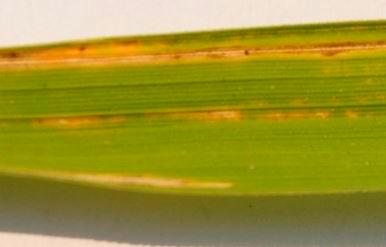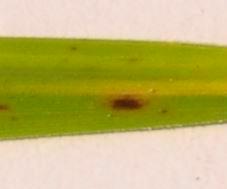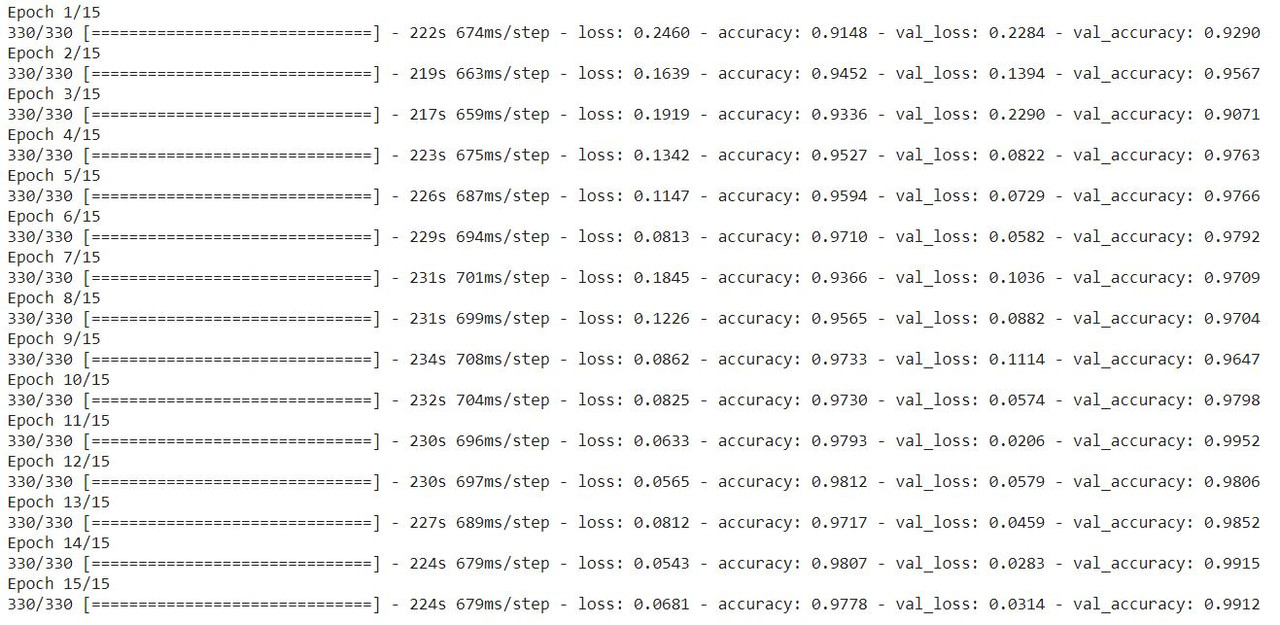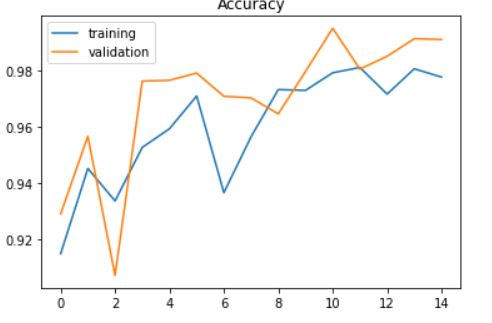- Dataset acquaired from my google.drive https://drive.google.com/file/d/1guJGuOTA4oHIiJeyaucPe3cgTwi-c3LT/view?usp=sharing
Classify three diseases on rice leaf there are :
i do explicitly augmentation data using PIL library to do it.
- cropping the images
- change the brightness
- change the saturation
- rotating the images
Load the images
from pathlib import Path
import pandas as pd
import matplotlib.pyplot as plt
import os
import numpy as np
import random
brown_spot_dir = Path("../tmp/rice_leaf_diseases_8/train/Brown spot/")
brown_spot = list(brown_spot_dir.glob(r"**/*.jpg")) + list(brown_spot_dir.glob(r"**/*.JPG"))
print("brown spot : ",len(brown_spot))
bacterial_leaf_blight_dir = Path("../tmp/rice_leaf_diseases_8/train/Bacterial leaf blight/")
bacterial_leaf_blight = list(bacterial_leaf_blight_dir.glob(r"**/*.jpg")) + list(bacterial_leaf_blight_dir.glob(r"**/*.JPG"))
print("bacterial leaf blight : ",len(bacterial_leaf_blight))
leaf_smut_dir = Path("../tmp/rice_leaf_diseases_8/train/Leaf smut/")
leaf_smut = list(leaf_smut_dir.glob(r"**/*.jpg")) + list(leaf_smut_dir.glob(r"**/*.JPG"))
print("leaf smut : ", len(leaf_smut))
healthy_dir = Path("../tmp/rice_leaf_diseases_8/train/Healthy/")
healthy = list(healthy_dir.glob(r"**/*.jpg")) + list(healthy_dir.glob(r"**/*.JPG"))
print("healthy : ", len(healthy))
train_dataset = brown_spot + bacterial_leaf_blight + leaf_smut + healthy
print(len(train_dataset))
brown spot : 3510
bacterial leaf blight : 3510
leaf smut : 3510
healthy : 3509
14039
test_brown_spot_dir = Path("../tmp/rice_leaf_diseases_8/test/Brown spot/")
test_brown_spot = list(test_brown_spot_dir.glob(r"**/*.jpg")) + list(test_brown_spot_dir.glob(r"**/*.JPG"))
print("brown spot : ",len(test_brown_spot))
test_bacterial_leaf_blight_dir = Path("../tmp/rice_leaf_diseases_8/test/Bacterial leaf blight/")
test_bacterial_leaf_blight = list(test_bacterial_leaf_blight_dir.glob(r"**/*.jpg")) + list(test_bacterial_leaf_blight_dir.glob(r"**/*.JPG"))
print("bacterial leaf blight : ",len(test_bacterial_leaf_blight))
test_leaf_smut_dir = Path("../tmp/rice_leaf_diseases_8/test/Leaf smut/")
test_leaf_smut = list(test_leaf_smut_dir.glob(r"**/*.jpg")) + list(test_leaf_smut_dir.glob(r"**/*.JPG"))
print("leaf smut : ",len(test_leaf_smut))
test_healthy_dir = Path("../tmp/rice_leaf_diseases_8/test/Healthy/")
test_healthy = list(test_healthy_dir.glob(r"**/*.jpg")) + list(test_healthy_dir.glob(r"**/*.JPG"))
print("healthy : ",len(test_healthy))
test_dataset = test_bacterial_leaf_blight + test_brown_spot + test_leaf_smut + test_healthy
print(len(test_dataset))
brown spot : 540
bacterial leaf blight : 540
leaf smut : 432
healthy : 540
2052
Using ImageDataGenerator and add some image augmentation using parameters on ImageDataGenerator method
- width_shift_range
- height_shift_range
- shear_range
- horizontal_flip
- vertical_flip
- fill_mode
import tensorflow as tf
train_generator = tf.keras.preprocessing.image.ImageDataGenerator(
rescale=1./255,
zoom_range=0.3,
width_shift_range=0.3,
height_shift_range=0.3,
shear_range=0.3,
horizontal_flip=True,
vertical_flip=True,
fill_mode='nearest',
validation_split=0.25
)
test_generator = tf.keras.preprocessing.image.ImageDataGenerator(
rescale=1./255,
)
train_images = train_generator.flow_from_dataframe(
dataframe= train_df,
x_col = 'Filepath',
y_col = 'Label',
target_size=(224,224),
color_mode='rgb',
shuffle=True,
seef=42,
class_mode="categorical",
subset='training'
)
val_images = train_generator.flow_from_dataframe(
dataframe= train_df,
x_col = 'Filepath',
y_col = 'Label',
target_size=(224, 224),
class_mode="categorical",
color_mode='rgb',
subset='validation'
)
test_images = test_generator.flow_from_dataframe(
dataframe=test_df,
x_col='Filepath',
y_col='Label',
target_size=(224, 224),
color_mode='rgb',
class_mode="categorical",
batch_size=32,
shuffle=False
)
own_model = tf.keras.models.Sequential([
tf.keras.layers.Conv2D(32,(3,3),activation="relu",input_shape=(224,224,3)),
tf.keras.layers.MaxPooling2D(2,2),
tf.keras.layers.Conv2D(64,(3,3), activation="relu"),
tf.keras.layers.MaxPooling2D(2,2),
tf.keras.layers.Conv2D(128,(3,3), activation="relu"),
tf.keras.layers.MaxPooling2D(2,2),
tf.keras.layers.Conv2D(128, (3, 3), activation="relu"),
tf.keras.layers.MaxPooling2D(2, 2),
tf.keras.layers.Flatten(),
tf.keras.layers.Dropout(0.5),
tf.keras.layers.Dense(512, activation="relu"),
tf.keras.layers.Dropout(0.5),
tf.keras.layers.BatchNormalization(),
tf.keras.layers.Dense(4, activation="softmax")
])
own_model.compile(
optimizer=tf.keras.optimizers.Adam(),
loss='categorical_crossentropy',
metrics=['accuracy']
)
H = own_model.fit(
train_images,
validation_data= val_images,
epochs=15,
)
import matplotlib.pyplot as plt
plt.plot(H.history['accuracy'])
plt.plot(H.history['val_accuracy'])
plt.legend(['training','validation'])
plt.title("Accuracy")
plt.plot(H.history['loss'])
plt.plot(H.history['val_loss'])
plt.legend(['training','validation'])
plt.title("Loss")
import numpy as np
pred = own_model.predict(test_images)
pred = np.argmax(pred,axis=1)
labels = (train_images.class_indices)
labels = dict((v,k) for k,v in labels.items())
pred = [labels[k] for k in pred]
print(f'The first 10 predictions: {pred[:10]}')
from sklearn.metrics import accuracy_score
y_test = list(test_df.Label)
acc = accuracy_score(y_test,pred)
print(f'Accuracy on the test set: {acc * 100:.2f}%')
from sklearn.metrics import classification_report
class_report = classification_report(y_test, pred, zero_division=1)
print(class_report)
The first 10 predictions: ['Healthy', 'Brown spot', 'Healthy', 'Leaf smut', 'Bacterial leaf blight', 'Healthy', 'Bacterial leaf blight', 'Leaf smut', 'Healthy', 'Leaf smut']
Accuracy on the test set: 99.71%
precision recall f1-score support
Bacterial leaf blight 1.00 0.99 1.00 540
Brown spot 0.99 1.00 1.00 540
Healthy 1.00 1.00 1.00 540
Leaf smut 1.00 1.00 1.00 432
accuracy 1.00 2052
macro avg 1.00 1.00 1.00 2052
weighted avg 1.00 1.00 1.00 2052







